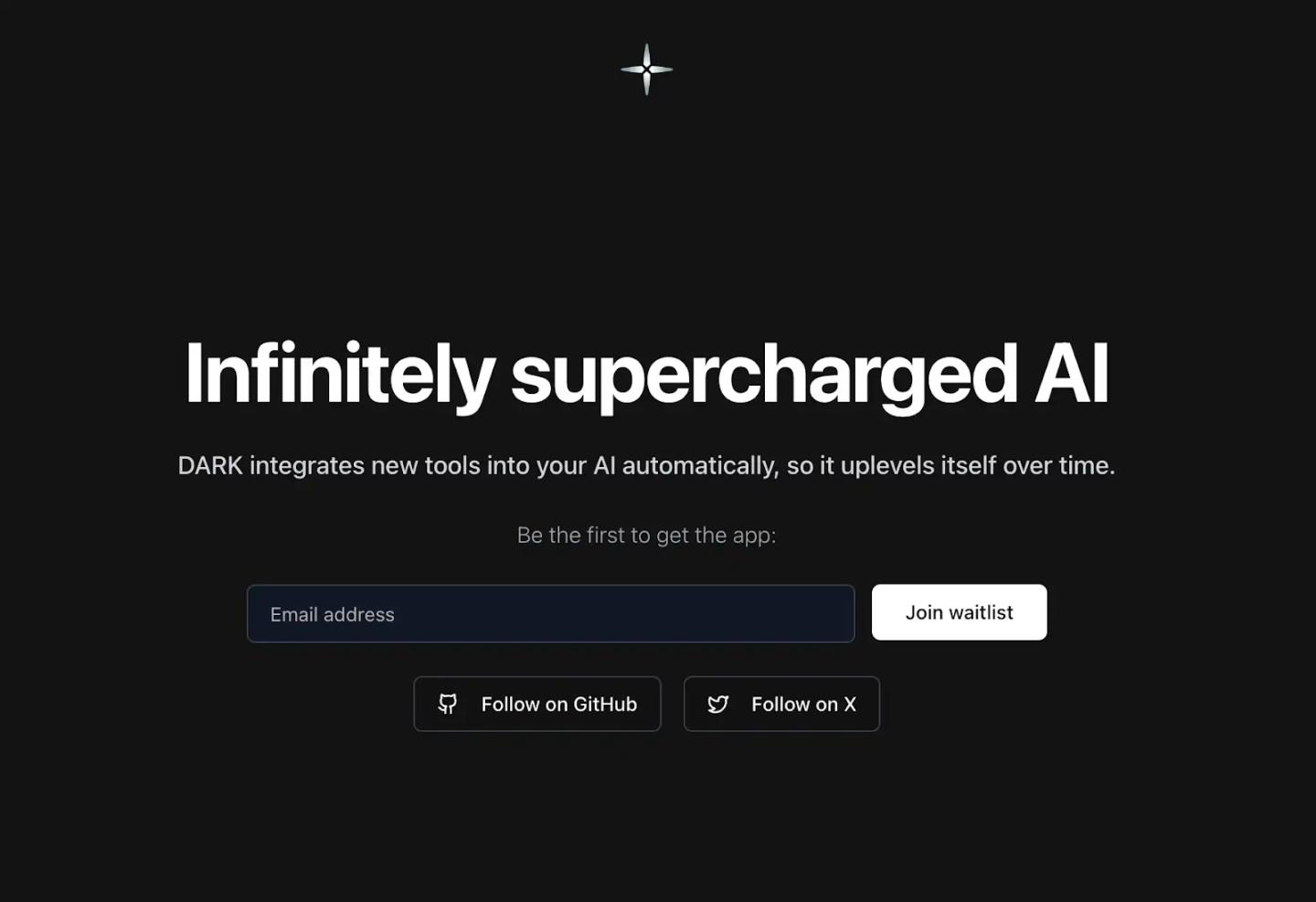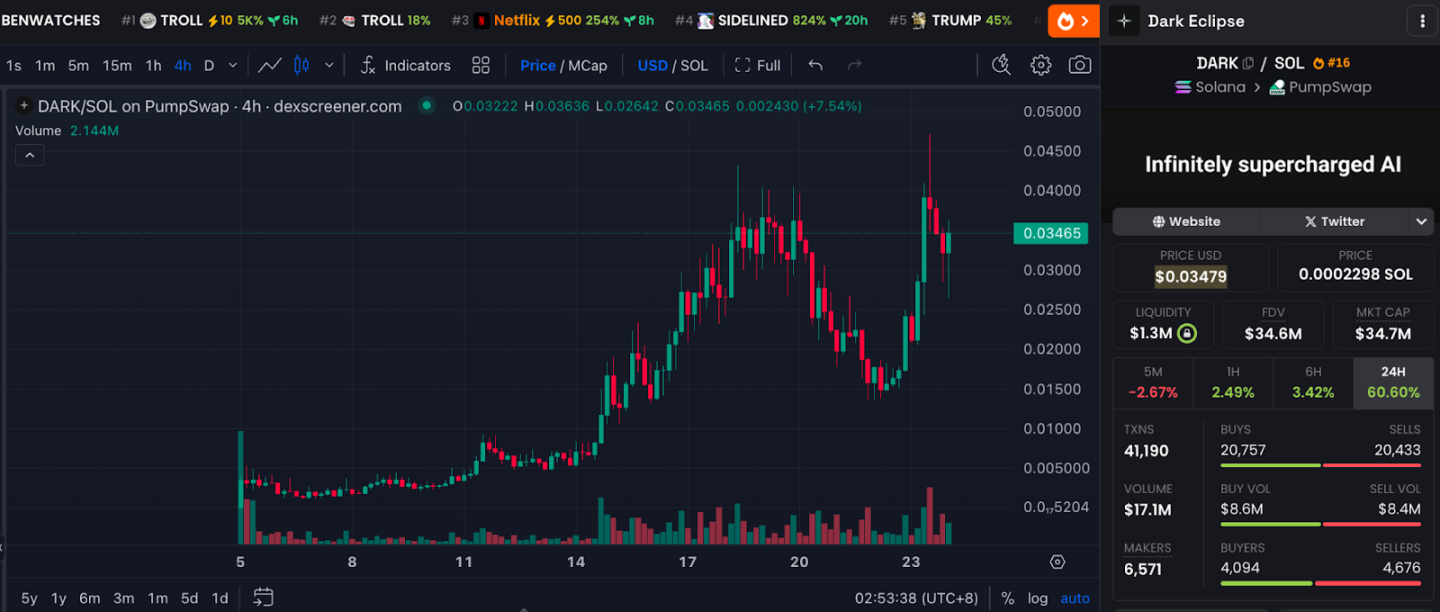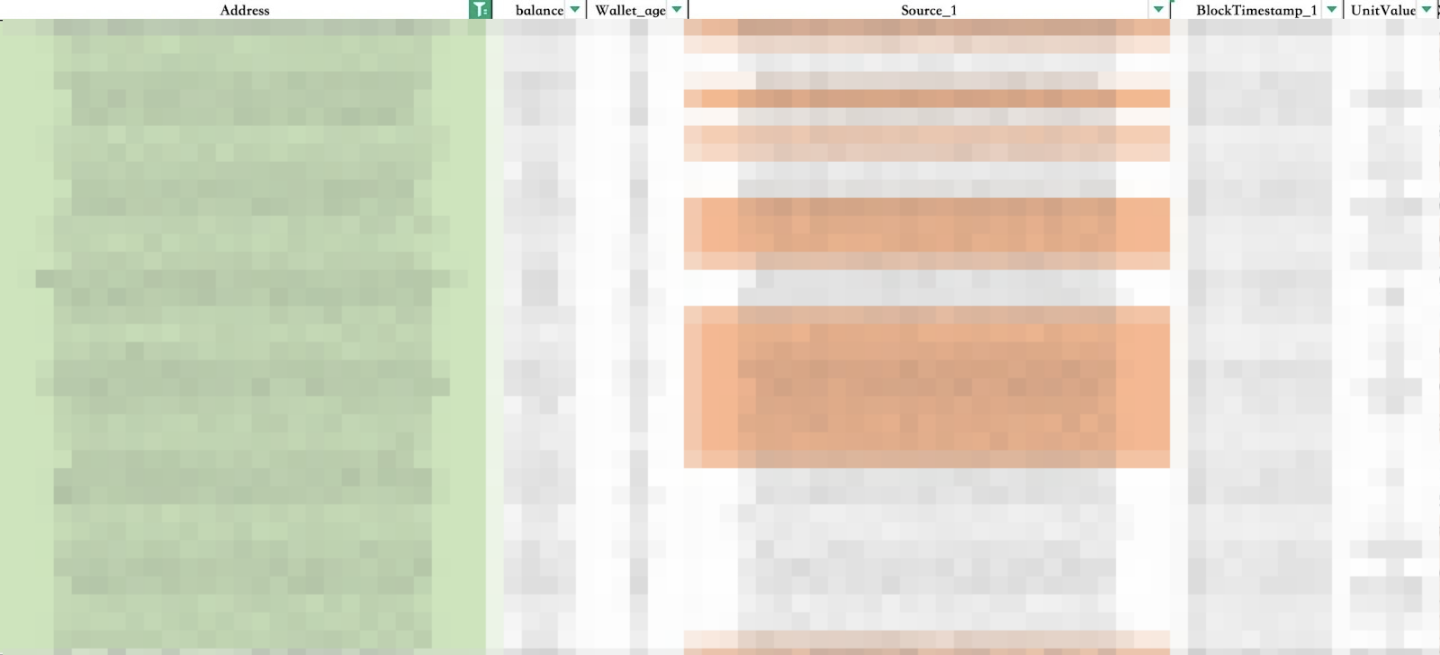If you have been paying attention to the crypto market recently, you may have noticed the amazing performance of $DARK: Against the backdrop of the new chairman of the U.S. SEC sending crypto-friendly signals, the market has rebounded across the board, and as an AI Meme project in the Solana ecosystem, $DARK has become the leader in this round of growth.
The market value of this token has been rising from the initial 2 million U.S. dollars, and recently exceeded 47 million U.S. dollars, setting a new historical high.
The popularity of $DARK is not accidental. As an AI project that provides multi-party computing (MCP) capabilities based on the TEE protocol, its founder @edgarpavlovsky created his own "tribute version" because of his love for the full-chain game Dark Forest. The project quickly gained market recognition with its efficient product delivery capabilities and became a star token in the Solana community.

However, behind these glamorous narratives, on-chain data reveals another picture: $DARK’s chip distribution shows obvious characteristics of chip control. So we can’t help but ask: Is this a community-driven success, or a carefully designed one controlled by a few people?

On-chain analysis: Who controls $DARK?
We conducted a comprehensive analysis of the top 500 $DARK holders (excluding exchanges), and the results show:
22.22% of the token supply is concentrated in the hands of 3 clusters;
There are close connections between these addresses, such as mutual fund transfers and shared sources of funds, forming a secret fund-control network.
The following are the specific analysis results:
Green cluster: the real controller of the market
Number of addresses: 136
Controlled ratio: 19.74%
On-chain features:
- Frequent transfer of funds between addresses;
- Some addresses share the same source and destination of funds;
- 27 addresses collectively hold $BC, and another 20 addresses collectively hold $RFC.
The green cluster is the core controlling force of $DARK, and its behavior pattern shows a high degree of organization.

Yellow cluster: hidden small-scale controllers
Number of addresses: 3
Controlled ratio: 1.25%
On-chain features:
- There is mutual transfer of funds between addresses;
- The destination of funds is highly consistent, but no common token holding characteristics are found.
Although the yellow cluster is small in size, it shows extremely high synergy and may play a supporting role in market activities.

Blue Cluster: Low-key "Shadow Players"
Number of addresses: 3
Controlled ratio: 1.23%
On-chain features:
- There is mutual transfer of funds between addresses;
- No other token holding characteristics were found.
The on-chain behavior of the blue cluster is relatively secretive, possibly to diversify risks or hide capital flows.

Decentralized stories, centralized truth
$DARK's narrative is decentralized and community-driven, but on-chain data reveals that the token distribution is highly centralized: only three clusters control more than 22% of the token supply. The risks behind this cannot be ignored:
Pricing power is concentrated in the hands of a few
Pumping the market: The crowd controlling the fund-raising can create the illusion of rising prices through collective buying, thus attracting retail investors’ FOMO;
Market crash: When prices are high, a concentrated sell-off occurs, causing the market to plummet.
Liquidity Control
Controlling crowdfunding can further manipulate market depth and create the illusion of price volatility by limiting token liquidity.
The illusion of decentralization
Although $DARK's narrative is "community-driven", actual control is concentrated in a few addresses, and ordinary investors actually lack price voice.
Conclusion: Is DARK a miracle or a script?
From product to narrative, $DARK seems to be a successful experiment in the Solana ecosystem. But the on-chain data reveals the hidden truth:
- Nearly 20% of the token supply is concentrated in the green cluster, and their behavior patterns are highly consistent;
- 22.22% of the tokens are controlled by 3 clusters, with significant control characteristics;
The so-called decentralized narrative may just be a carefully packaged story.
When investing in projects like $DARK, investors need to ask themselves a question: Are you paying for the success of the community, or are you adding to the wealth of a few?












